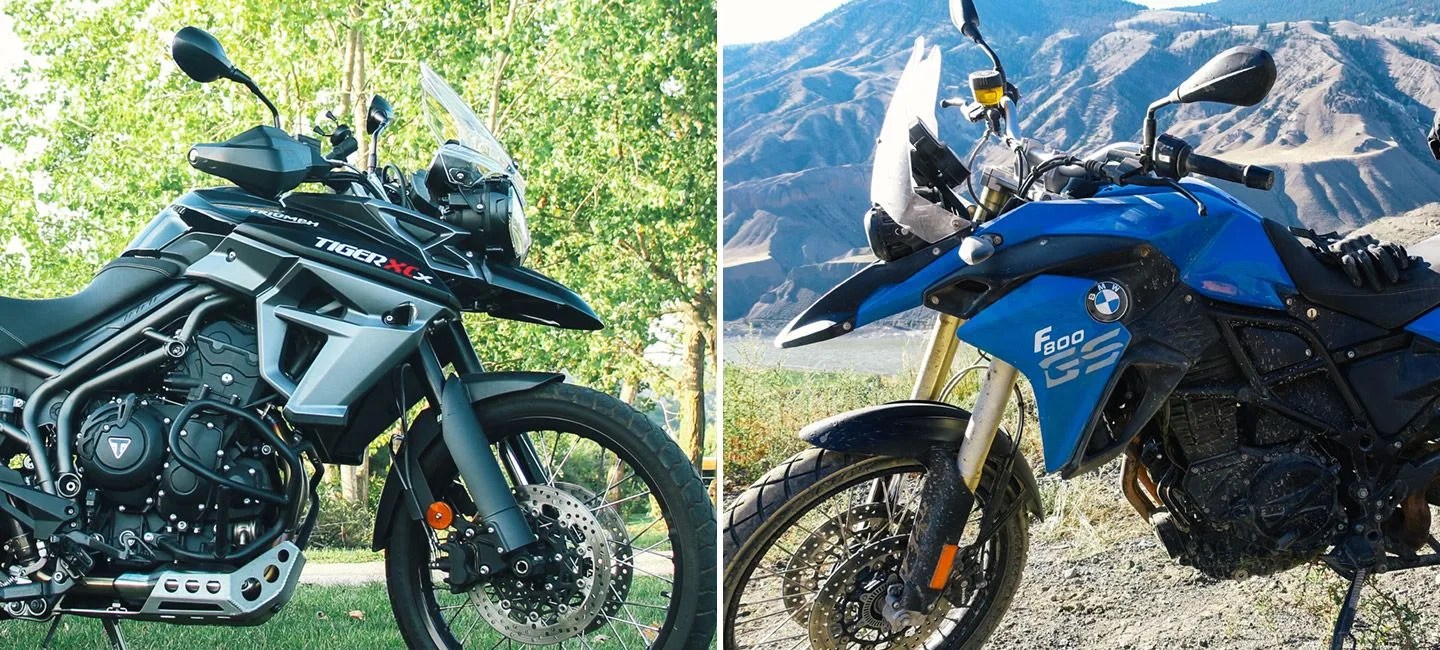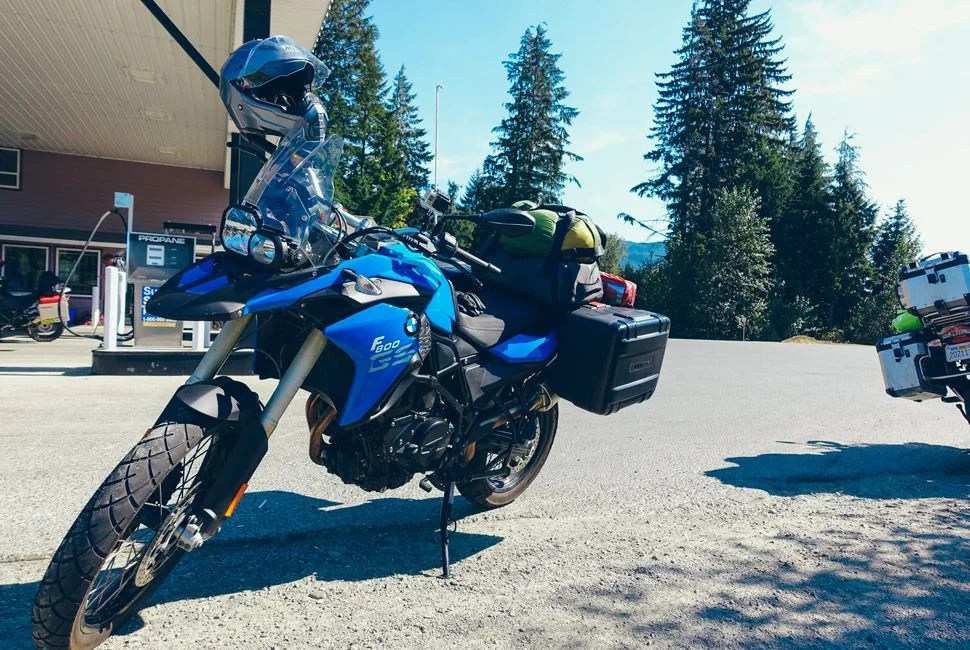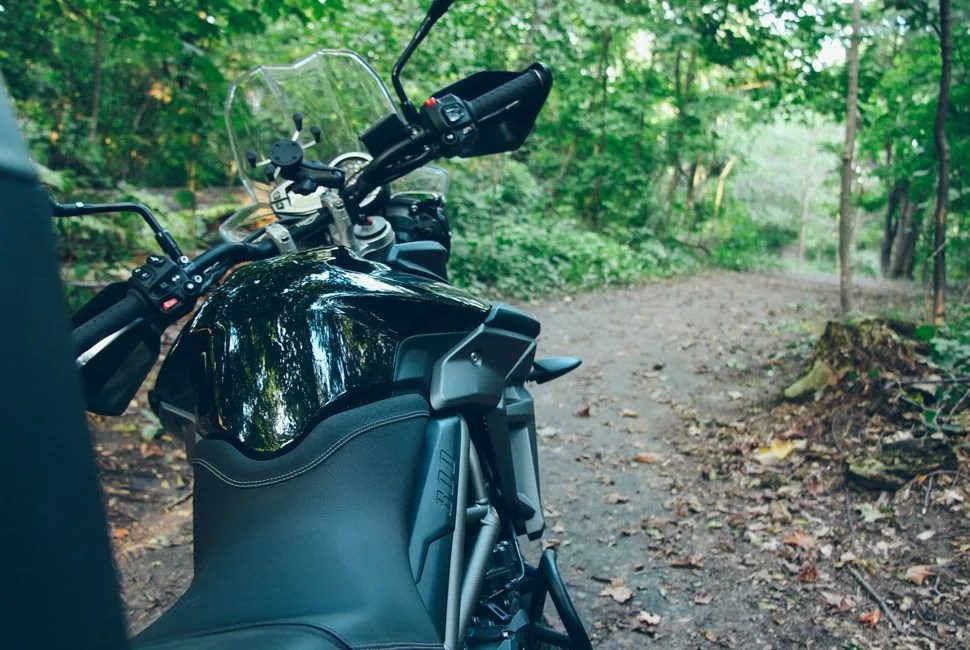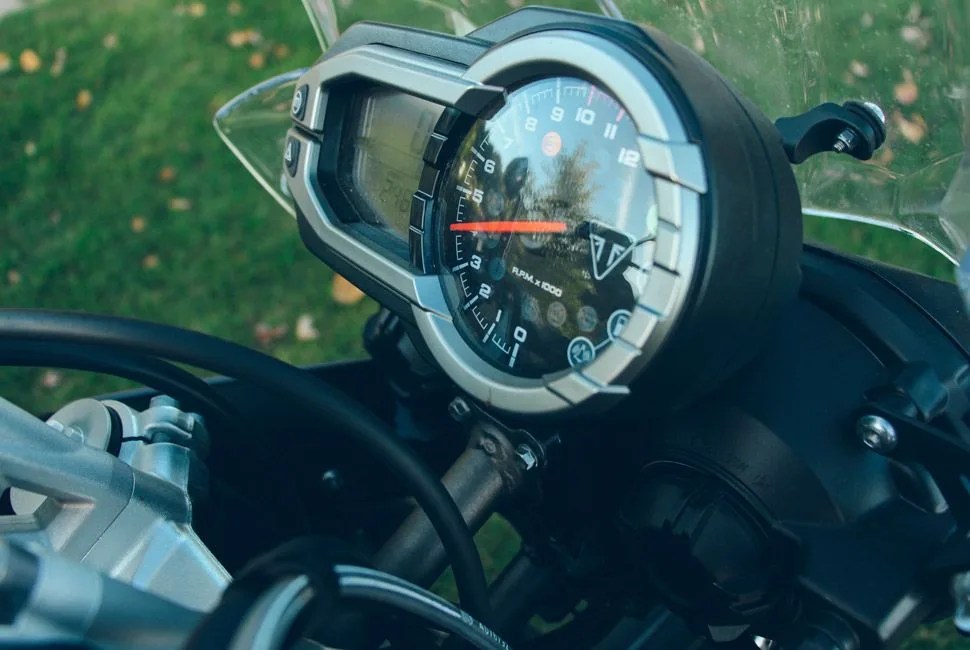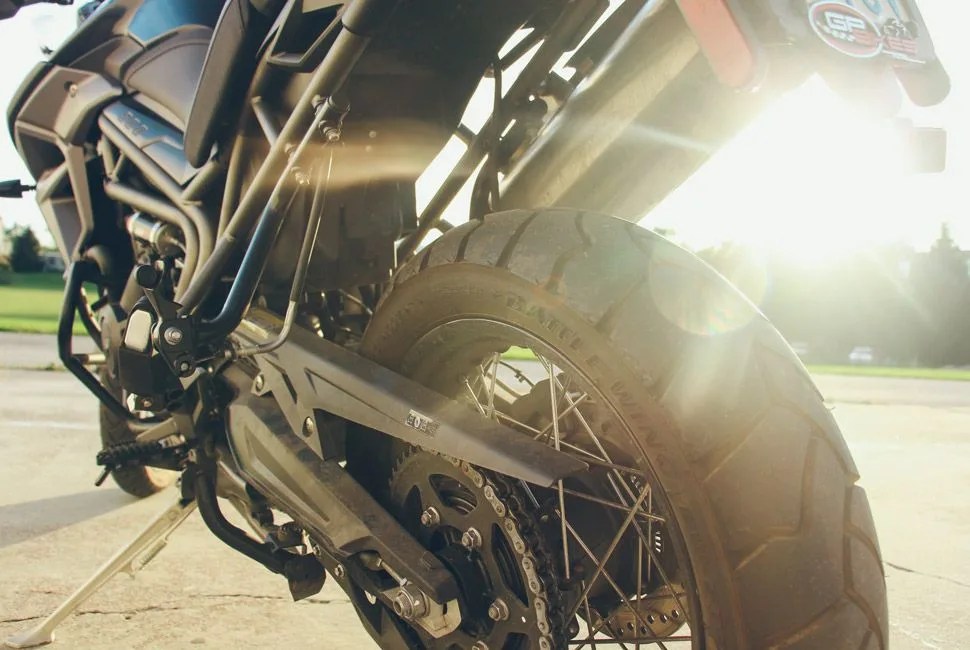The middleweight category of adventure touring bikes should be overflowing with options, but it’s not. This smaller breed of Swiss-Army bikes is lighter, more maneuverable and arguably better suited to the dual-sport conditions wanderlusting riders dream about. They handle two-up touring and interstate duty with ease, devour B-roads and, thanks to their smaller stature, perform admirably as daily grinders. And yet, there aren’t even a handful of choices on North American soil. With Kawasaki’s Versys fully embracing its sporty side, it means only three remain: The Suzuki V-Strom 650, BMW F800 GS and Triumph Tiger 800 XCx. Suzuki’s new V-Strom 650 (especially in XT trim) is a fantastic value for riders on a budget, but conversations on the most dominant bike within this category start and end with a European.
BMW owns the adventure motorcycle market. Ever since Charley and Ewan set their compasses east, the Roundel has become synonymous with go-everywhere, do-everything type touring. Despite better, more focused offerings from KTM, BMW’s R1200 GS remains the world heavyweight champion of the class; its mere silhouette is enough to spur maps to be unfolded and circumnavigational dreams to unfurl. No surprise, then, that the smaller F800 GS Adventure should ape some styling — and earn instant unpaved-street cred — from its bigger brother.
The differences between these two don’t truly start to appear until you look under their skin. Distinction starts at the engine.
Of course the F800 GS isn’t the only bike to steal pages from the big GS’s lookbook. Every motorcycle with off-road intentions — save offerings from KTM’s lineup — is wearing the same uniform, including Triumph’s Tiger 800 XCx. From a distance, even a rider in the know could have trouble discerning between the Beemer and the Triumph. Both come riding spoked 21-inch wheels up front with 17-inch hoops in the rear, have an exposed, tubular trellis frame, slender waistlines, wide bars, minimal fairings and that ubiquitous ADV calling card: a large, pronounced beak. In fact, the differences between these two don’t truly start to appear until you look under their skin. Distinction starts at the engine.
4 photos
The BMW is powered by a 798cc, parallel-twin engine. It produces 85 horsepower and 61 lb-ft of torque in a smooth, flat, very Germanic power curve with unobtrusive fueling and a telltale thrum. The Triumph, on the other hand, employs a 799cc inline three-cylinder mill for motivation. It’s a free-revving engine with loads of character and a more engaging soundtrack. In terms of metrics, the triple cranks out nine more horsepower than the twin (94 horsepower total) but surrenders three lb-ft of torque (58 lb-ft total) in the process. The Tiger is slightly heavier, too (487 pounds versus 472 pounds). Configurations and numbers stand out on paper, but what’s most noticeable from the saddle is the differences in positioning of those power plants within each bike.
The Bavarian’s engine sits inline with the hump of its (faux) gas tank. This causes most of the Beemer’s weight to fall amidships, and on the road, this causes it to suffer. With less weight over the front tire, the front end feels especially light at speed with noticeable bar wobble that makes things slightly unnerving when initiating leans. This is only exacerbated when touring with a full load of kit on the back. Even after fiddling with suspension settings and readjusting tire pressures, the F800 GS just couldn’t find its sweet spot on tarmac. I constantly found myself having to lean forward as far as possible, laying down on the tank like a knee-dragger thrashing a supersport from a much higher perch, just to get the baby GS to behave the way I wanted it to. This may sound like fun, but it is utterly exhausting. That parallel-twin motor does get a bit buzzy above 65 mph, too, tiring out tingly hands.
